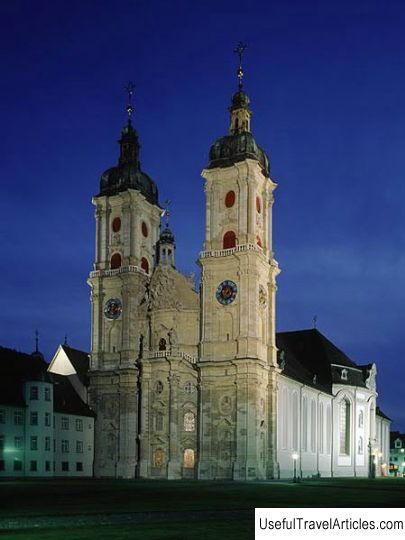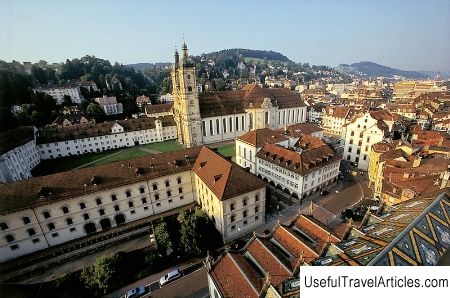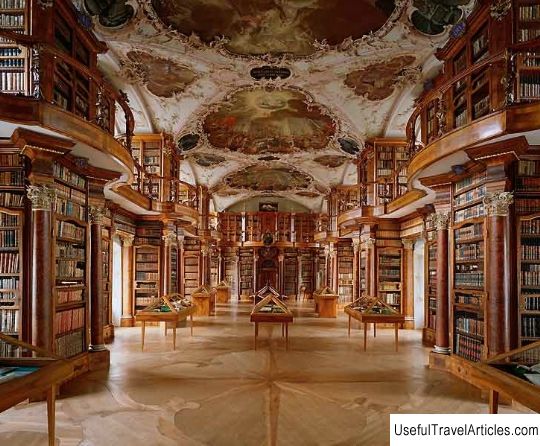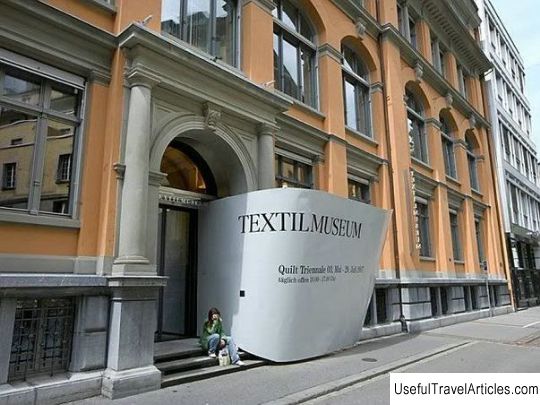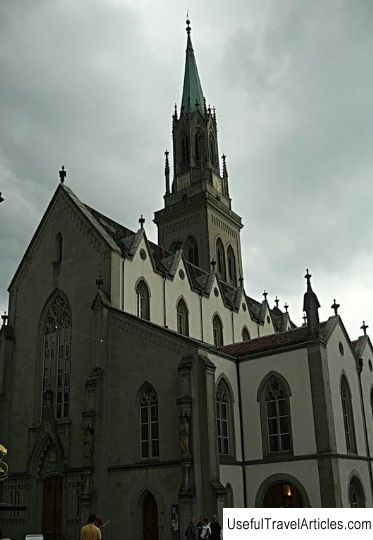Gate of St. Charles (Karlstor) description and photos - Switzerland: St. Gallen
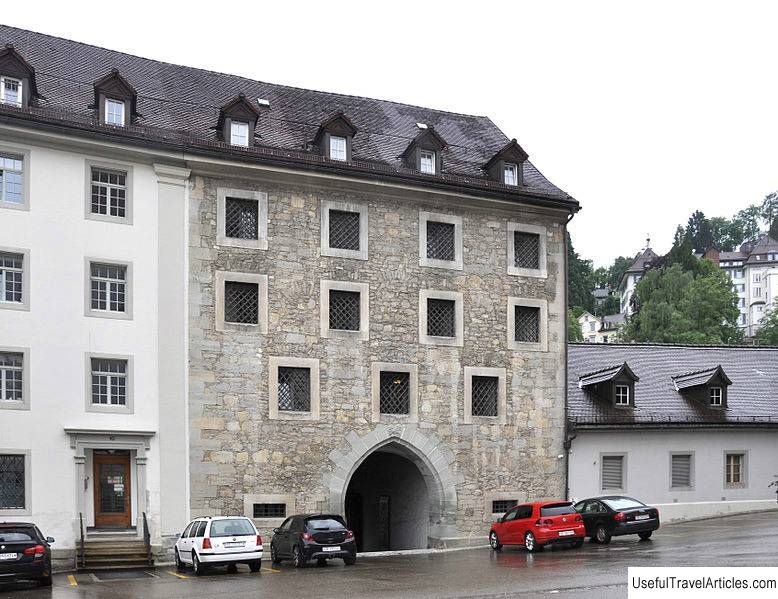
St. Karl's Gate (Karlstor) description and photos - Switzerland: St. Gallen. Detailed information about the attraction. Description, photographs and a map showing the nearest significant objects. The name in English is Karlstor. Photo and descriptionKarlstor, or St. Charles's gate, is the only surviving part of the medieval walls of St. Gallen in Switzerland. This gate was built in 1569-1570. Due to the economic stability that the city received in the 14th century as a result of the development of flax workshops, St. Gallen was considered a separate site, independent from the Confederation. In those days, its history was strongly influenced by the repeated conflicts between the city and the local monastery. Even then, the idea of building separate gates in the city wall was expressed so that the holy fathers could use them and not collide with the townspeople. Then this plan was not carried out. After As a well-known adherent of the Reformation, Joachim von Watt, in 1526, began to preach his religion in St. Gallen, many residents of the city became Protestants. The Catholic monastery found itself even more isolated. The abbey was located on the territory of the city, which in turn was surrounded by defensive walls with towers. Thus, in order to leave the city, the abbot of the monastery had to drive through the city that had accepted the new faith. This led to even more violent clashes between monks and townspeople. Only in 1566, the two warring parties were able to resolve this conflict with the help of mediators. Abbot Otmar Kunz received the right to make his own gate with a drawbridge in the city wall closest to the monastery. The gates leading from the abbey to the city were to be locked with two locks. Only the abbot of the monastery and the mayor of the city had their keys. The abbot, in turn, had to renounce all claims to the city and its inhabitants. Construction of the new gate of St. Charles in the southeastern part of the wall began in 1569. Instead of a drawbridge, a narrow dam with a small wooden bridge was built. And today, on the gates of St. Charles, you can see a relief depicting Abbot Otmar, who achieved their construction. Nearby is the image of Saint Gall, the founder of the monastery. And above them you can see the relief with the crucifixion of Jesus. Nearby, the sculptor Baltus von Seilmannsweiler depicted the Virgin Mary and St. John. The gate is named after Cardinal Carl Borromeo, who was the first church hierarch to enter the city through it. The abbot, in turn, had to renounce all claims to the city and its inhabitants.Construction of the new gate of St. Charles in the southeastern part of the wall began in 1569. Instead of a drawbridge, a narrow dam with a small wooden bridge was built. And today, on the gates of St. Charles, you can see a relief that depicts Abbot Otmar, who achieved their construction. Nearby is the image of Saint Gall, the founder of the monastery. And above them you can see the relief with the crucifixion of Jesus. Nearby, the sculptor Baltus von Seilmannsweiler depicted the Virgin Mary and St. John. The gate is named after Cardinal Carl Borromeo, who was the first church hierarch to enter the city through it. The abbot, in turn, had to give up all claims to the city and its inhabitants.Construction of the new gate of St. Charles in the southeastern part of the wall began in 1569. Instead of a drawbridge, a narrow dam with a small wooden bridge was built. And today, on the gates of St. Charles, you can see a relief depicting Abbot Otmar, who achieved their construction. Nearby is the image of Saint Gall, the founder of the monastery. And above them you can see the relief with the crucifixion of Jesus. Nearby, the sculptor Baltus von Seilmannsweiler depicted the Virgin Mary and St. John. The gate is named after Cardinal Carl Borromeo, who was the first church hierarch to enter the city through it. The construction of the new gate of St. Charles in the southeastern part of the wall began in 1569. Instead of a drawbridge, a narrow dam with a small wooden bridge was built. And today, on the gates of St. Charles, you can see a relief depicting Abbot Otmar, who achieved their construction. Nearby is the image of Saint Gall, the founder of the monastery. And above them you can see the relief with the crucifixion of Jesus. Nearby, the sculptor Baltus von Seilmannsweiler depicted the Virgin Mary and St. John. The gate is named after Cardinal Carl Borromeo, who was the first church hierarch to enter the city through it. The construction of the new St. Charles Gate in the southeastern part of the wall began in 1569. Instead of a drawbridge, a narrow dam with a small wooden bridge was built. And today, on the gates of St. Charles, you can see a relief depicting Abbot Otmar, who achieved their construction. Nearby is the image of Saint Gall, the founder of the monastery. And above them you can see the relief with the crucifixion of Jesus. Nearby, the sculptor Baltus von Seilmannsweiler depicted the Virgin Mary and St. John. The gate is named after Cardinal Carl Borromeo, who was the first church hierarch to enter the city through it. who achieved their construction. Nearby is the image of Saint Gall, the founder of the monastery. And above them you can see the relief with the crucifixion of Jesus. Nearby, the sculptor Baltus von Seilmannsweiler depicted the Virgin Mary and St. John. The gate is named after Cardinal Carl Borromeo, who was the first church hierarch to enter the city through it. who achieved their construction. Nearby is the image of Saint Gall, the founder of the monastery. And above them you can see the relief with the crucifixion of Jesus. Nearby, the sculptor Baltus von Seilmannsweiler depicted the Virgin Mary and St. John. The gate is named after Cardinal Carl Borromeo, who was the first church hierarch to enter the city through it.   We also recommend reading Monastery of Mericell (Santuari de Meritxell) description and photos - Andorra: Canillo Topic: Gate of St. Charles (Karlstor) description and photos - Switzerland: St. Gallen. |
